Refer to the exhibits, which show the system performance output and the default configuration of high memory usage thresholds in a FortiGate.
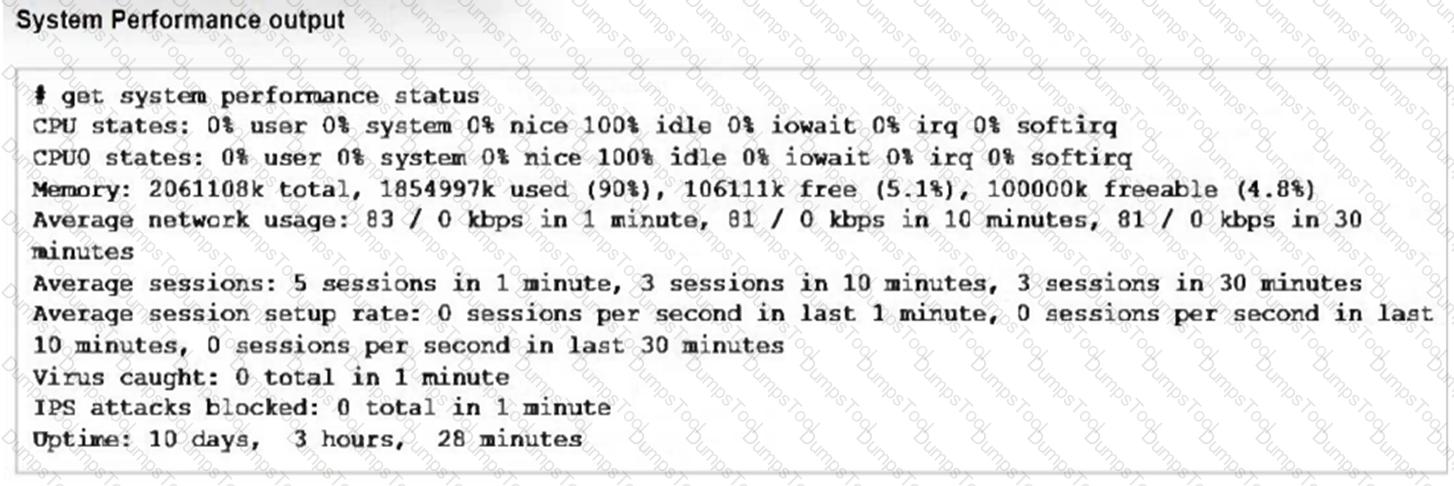

Based on the system performance output, what can be the two possible outcomes? (Choose two.)
Refer to the exhibits.
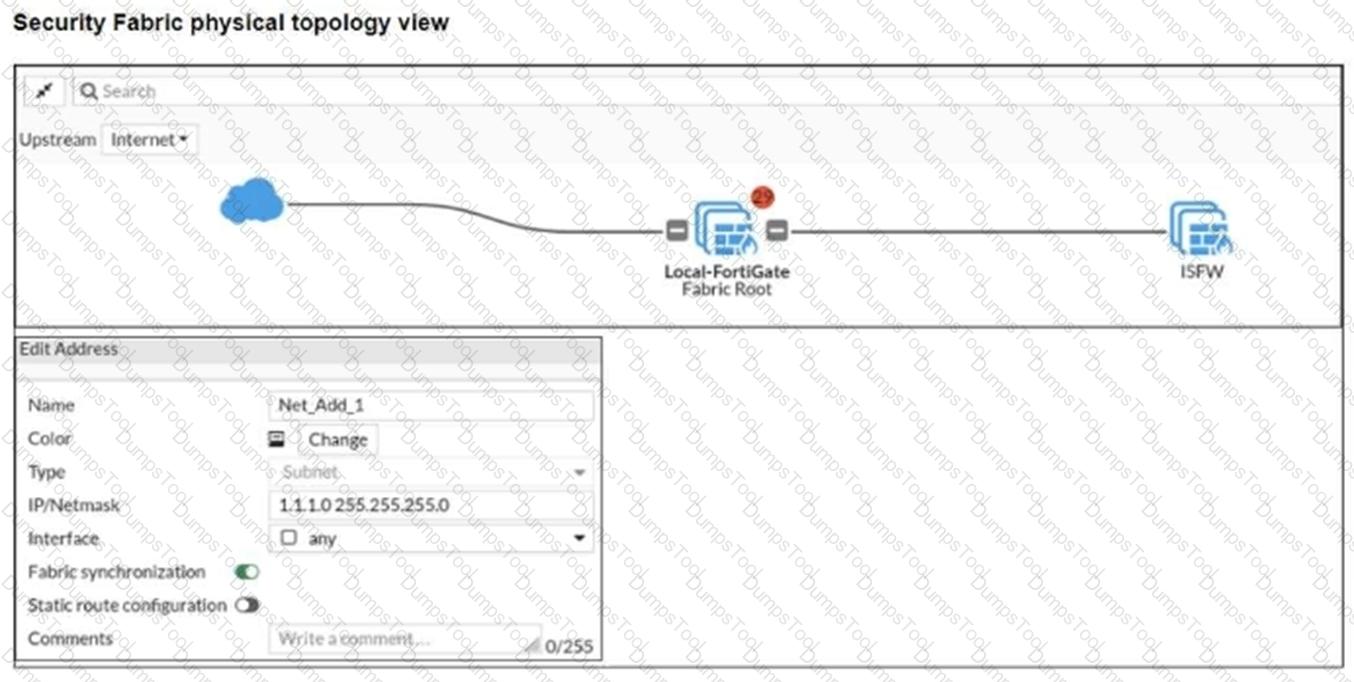

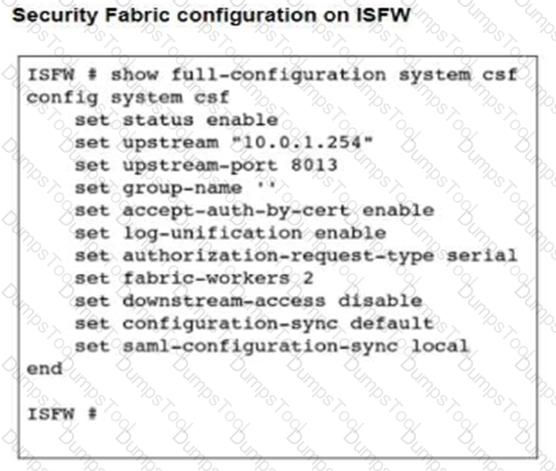
An administrator creates a new address object on the root FortiGate (Local-FortiGate) in the security fabric. After synchronization, this object is not available on the downstream FortiGate (ISFW).
What must the administrator do to synchronize the address object?
Refer to the exhibit.

FortiGate is configured for firewall authentication. When attempting to access an external website, the user is not presented with a login prompt.
What is the most likely reason for this situation?
Which statement about the deployment of the Security Fabric in a multi-VDOM environment is true?
A network administrator has enabled full SSL inspection and web filtering on FortiGate. When visiting any HTTPS websites, the browser reports certificate warning errors. When visiting HTTP websites, the browser does not report errors.
What is the reason for the certificate warning errors?
Refer to the exhibit.
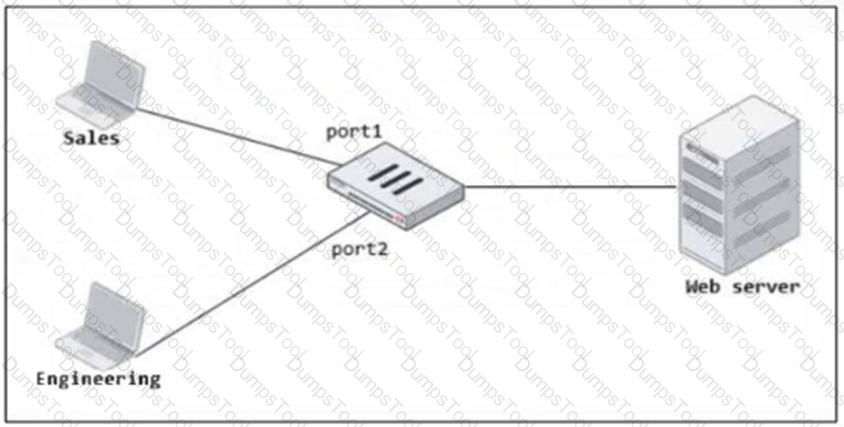
FortiGate has two separate firewall policies for Sales and Engineering to access the same web server with the same security profiles.
Which action must the administrator perform to consolidate the two policies into one?
Which two statements about equal-cost multi-path (ECMP) configuration on FortiGate are true? (Choose two.)
A network administrator wants to set up redundant IPsec VPN tunnels on FortiGate by using two IPsec VPN tunnels and static routes.
All traffic must be routed through the primary tunnel when both tunnels are up. The secondary tunnel must be used only if the primary tunnel goes down. In addition, FortiGate should be able to detect a dead tunnel to speed up tunnel failover.
Which two key configuration changes must the administrator make on FortiGate to meet the requirements? (Choose two.)
A network administrator is configuring an IPsec VPN tunnel for a sales employee travelling abroad.
Which IPsec Wizard template must the administrator apply?
Which two attributes are required on a certificate so it can be used as a CA certificate on SSL inspection? (Choose two.)
Which three methods are used by the collector agent for AD polling? (Choose three.)
When FortiGate performs SSL/SSH full inspection, you can decide how it should react when it detects an invalid certificate.
Which three actions are valid actions that FortiGate can perform when it detects an invalid certificate? (Choose three.)
Refer to the exhibit.
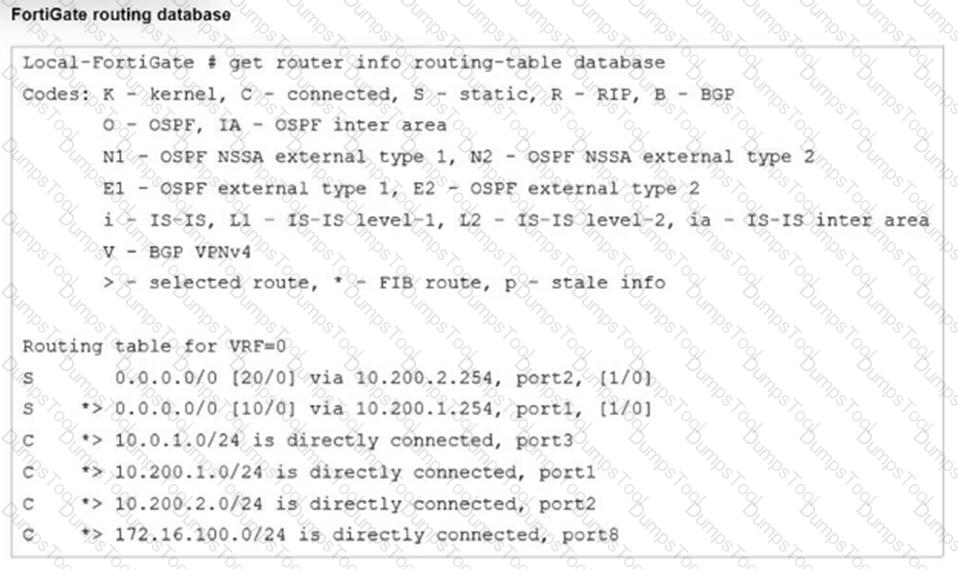
Which two statements are true about the routing entries in this database table? (Choose two.)
An administrator manages a FortiGate model that supports NTurbo.
How does NTurbo enhance performance for flow-based inspection?
Which three strategies are valid SD-WAN rule strategies for member selection? (Choose three.)
Refer to the exhibit showing a FortiGuard connection debug output.
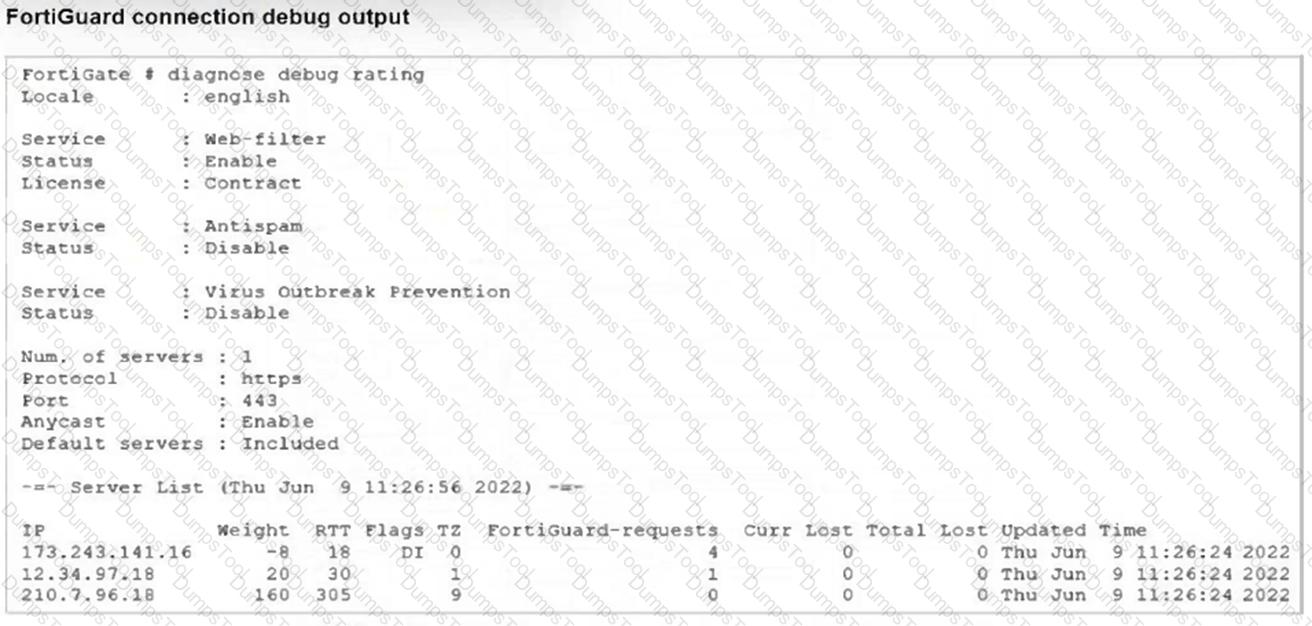
Based on the output, which two facts does the administrator know about the FortiGuard connection? (Choose two.)
Refer to the exhibits.



The exhibits show a diagram of a FortiGate device connected to the network, and the firewall policies configuration VIP configuration and IP pool configuration on the FortiGate device
The WAN (port1) interface has the IP address 10.200. l. 1/24 The LAN (port3) interface has the IP address 10.0.1.254/24
The first firewall policy has NAT enabled using the IP pool The second firewall policy is configured with a VIP as the destination address.
Which IP address will be used to source NAT (SNAT) the internet traffic coming from a workstation with the IP address 10.0.1.10?
An administrator is configuring an IPsec VPN between site A and site В. The Remote Gateway setting in both sites has been configured as Static IP Address.
For site A, the local quick mode selector is 192.168.1.0/24 and the remote quick mode selector is 192.168.2.0/24.
Which subnet must the administrator configure for the local quick mode selector for site B?
Which three pieces of information does FortiGate use to identify the hostname of the SSL server when SSL certificate inspection is enabled? (Choose three.)